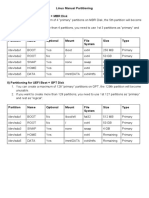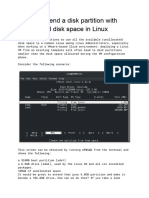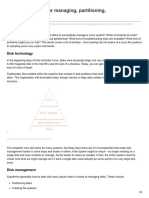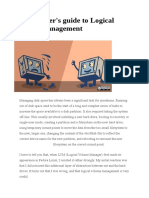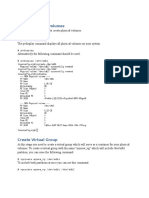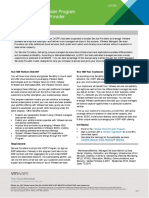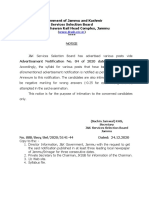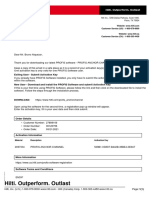0% found this document useful (0 votes)
15 views31 pagesLinux Partation
The document outlines best practices for partitioning Linux systems to enhance performance, security, and maintenance. It emphasizes the importance of separate partitions for root, boot, home, and var directories, as well as the use of Logical Volume Manager (LVM) for flexibility in managing storage. Various partitioning schemes are suggested based on system types, workloads, and storage requirements, along with practical commands for managing LVM.
Uploaded by
tr0ffic.netw0rkCopyright
© © All Rights Reserved
We take content rights seriously. If you suspect this is your content, claim it here.
Available Formats
Download as PDF, TXT or read online on Scribd
0% found this document useful (0 votes)
15 views31 pagesLinux Partation
The document outlines best practices for partitioning Linux systems to enhance performance, security, and maintenance. It emphasizes the importance of separate partitions for root, boot, home, and var directories, as well as the use of Logical Volume Manager (LVM) for flexibility in managing storage. Various partitioning schemes are suggested based on system types, workloads, and storage requirements, along with practical commands for managing LVM.
Uploaded by
tr0ffic.netw0rkCopyright
© © All Rights Reserved
We take content rights seriously. If you suspect this is your content, claim it here.
Available Formats
Download as PDF, TXT or read online on Scribd
/ 31





























